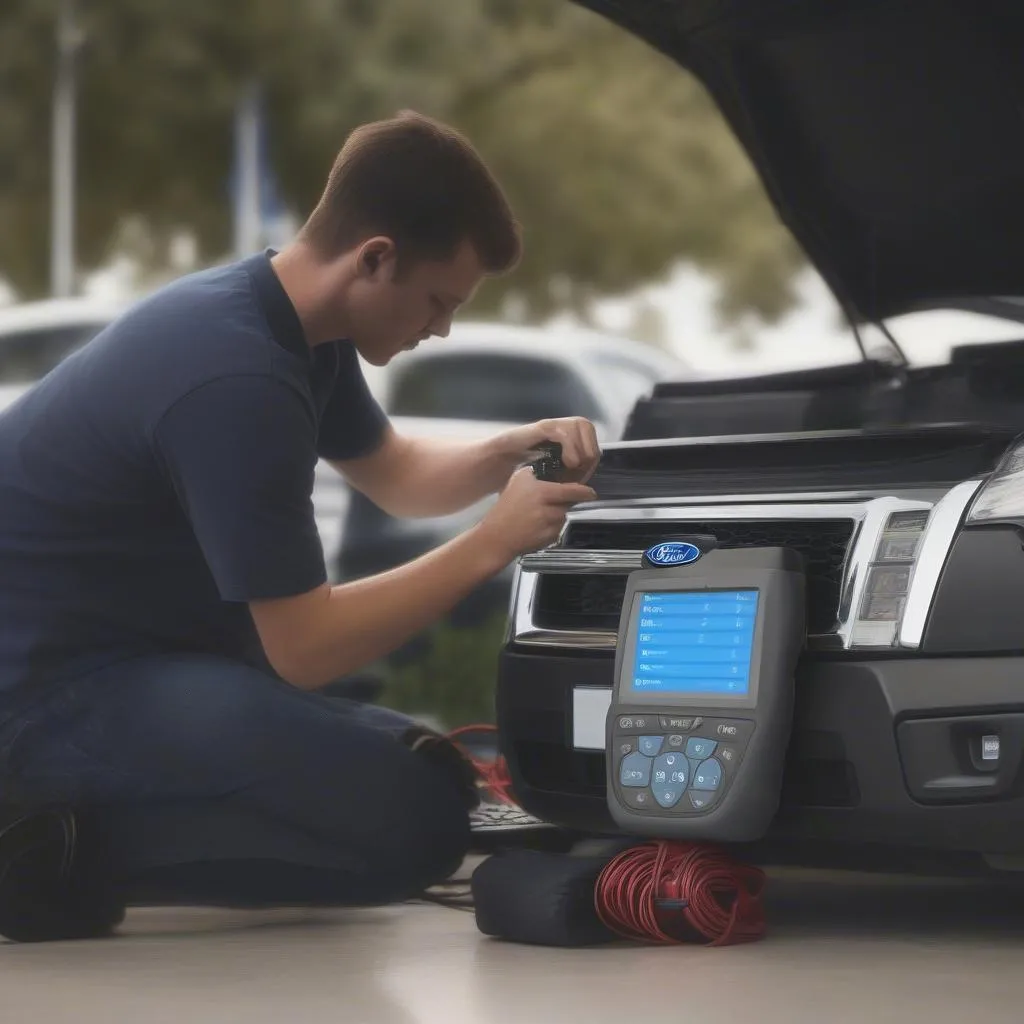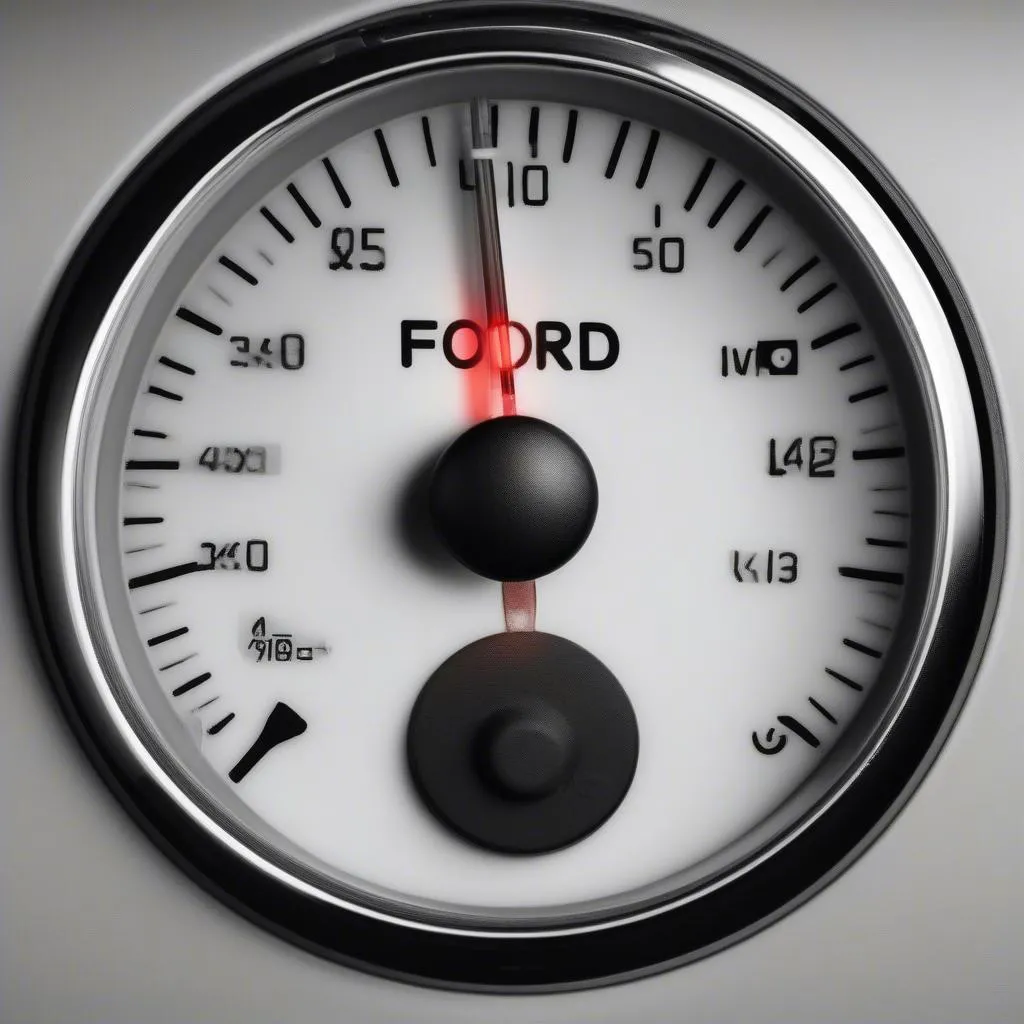Have you ever encountered a blinking check engine light in your Ford and wondered what it meant? It’s a common experience, and while it can be a bit stressful, understanding OBD2 codes can help you troubleshoot potential problems and save you money in the long run. This guide will break down everything you need to know about the Ford OBD2 code chart, including how to interpret codes, what they mean, and how to use them to fix problems.
Understanding Ford OBD2 Codes
The OBD2 system, or On-Board Diagnostics 2, is a standardized diagnostic system used in most vehicles manufactured after 1996. It acts like a little black box that monitors your vehicle’s various systems, identifying and recording potential issues that may lead to a “check engine” light or other warning indicators. The Ford OBD2 code chart is a tool that helps technicians and car owners understand what those recorded issues are, which can help diagnose problems and pinpoint the source.
Why Ford OBD2 Code Charts Matter
Imagine you’re driving down the road and your “check engine” light suddenly flickers on. You immediately feel a wave of anxiety. Is it something serious? Will it cost you a fortune to fix? This is where the Ford OBD2 code chart comes in handy. It can help you decipher the warning light, giving you more information about the potential problem.
The Value of Knowledge
Even if you’re not a mechanic, understanding the basic concepts of OBD2 codes empowers you to take control of your vehicle’s maintenance. You can:
- Identify potential problems early: Early detection of issues can prevent more significant damage and expensive repairs down the line.
- Save money on diagnostics: Many car owners spend unnecessary money on expensive diagnostics because they aren’t familiar with basic troubleshooting techniques. Using an OBD2 code reader and a code chart can help you save money.
- Communicate effectively with mechanics: Knowing your OBD2 codes helps you communicate more effectively with mechanics, allowing them to quickly pinpoint the problem and provide you with the most accurate diagnosis.
How to Use a Ford OBD2 Code Chart
To access the codes stored within your Ford’s onboard computer, you’ll need an OBD2 code reader, which is available at most auto parts stores. The code reader plugs into your vehicle’s OBD2 port, typically located under the steering wheel or near the dashboard. Once connected, the reader will display the specific code that your Ford’s computer has recorded.
Decoding the Code
Ford OBD2 codes are typically formatted as P0xxx, P1xxx, P2xxx, or P3xxx, where:
- P: Indicates a powertrain-related code.
- 0xxx: General powertrain codes.
- 1xxx: Manufacturer-specific codes (unique to Ford).
- 2xxx: Sensors and actuators codes.
- 3xxx: Misfire and combustion codes.
For example, a code like P0301 indicates a cylinder 1 misfire.
Where to Find Ford OBD2 Code Charts
You can find comprehensive Ford OBD2 code charts online or in repair manuals. Here are a few popular resources:
- Ford Service Manuals: The official Ford service manuals contain detailed information about the OBD2 codes specific to each model.
- Online Databases: Websites like https://techcarusa.com/list-of-ford-obd-codes/ offer free code charts and explanations.
- OBD2 Scanner Apps: Many OBD2 scanner apps, available on smartphones and tablets, include built-in code lookup features.
 Ford OBD2 Code Chart
Ford OBD2 Code Chart
Common Ford OBD2 Codes and Their Causes
Here are some of the most common Ford OBD2 codes and their potential causes:
- P0300 – Random/Multiple Cylinder Misfire Detected: This code indicates that there’s a problem with one or more cylinders misfiring. Potential causes include faulty spark plugs, ignition coils, fuel injectors, or air intake issues.
- P0171 – System Too Lean (Bank 1): This code signifies that the engine is running too lean, meaning there’s not enough fuel in the air/fuel mixture. Common causes include faulty oxygen sensors, fuel injectors, or a vacuum leak.
- P0420 – Catalyst System Efficiency Below Threshold (Bank 1): This code suggests that the catalytic converter is not functioning correctly. This could be due to a faulty catalytic converter, a clogged exhaust system, or problems with the oxygen sensors.
- P0135 – O2 Sensor Heater Circuit Malfunction (Bank 1, Sensor 1): This code indicates that the oxygen sensor’s heater circuit is not working properly. This can be due to a faulty oxygen sensor, wiring problems, or a bad relay.
- P0174 – System Too Lean (Bank 2): This code is similar to P0171 but relates to Bank 2 of the engine. The same causes apply.
Troubleshooting Tips:
While you can often diagnose and fix some problems using the Ford OBD2 code chart, it’s important to remember that these are just potential causes. A thorough inspection by a certified mechanic is usually needed for accurate diagnosis and repair. However, here are a few basic troubleshooting tips you can try:
- Check and replace spark plugs: Worn or faulty spark plugs can cause misfires.
- Inspect the fuel injectors: Dirty or clogged fuel injectors can lead to lean running conditions.
- Examine the air intake system for leaks: Vacuum leaks can disrupt the air/fuel mixture.
- Verify the oxygen sensor operation: Faulty oxygen sensors can lead to inaccurate fuel mixture readings.
Beyond the Code Chart:
While the Ford OBD2 code chart is a valuable tool, it’s crucial to remember that it’s just one piece of the puzzle. Other factors that can contribute to vehicle problems include:
- Driving habits: Aggressive driving and neglect of maintenance can lead to problems.
- Environmental factors: Extreme temperatures, humidity, or poor fuel quality can also affect performance.
- Vehicle age: Older vehicles are more susceptible to mechanical issues.
Tips for Preventing Problems:
- Regular maintenance: Follow your Ford’s recommended service schedule and address any warning lights promptly.
- Use high-quality fuel: Always use high-quality gasoline to prevent engine issues.
- Keep your car clean: Regular cleaning can help prevent buildup and potential problems.
Frequently Asked Questions:
Q: What’s the difference between a Ford OBD2 code chart and a generic OBD2 code chart?
A: Generic OBD2 code charts cover common codes across all vehicles. Ford-specific OBD2 code charts include more detailed information and codes specific to Ford models.
Q: Can I use an OBD2 code reader on any car?
A: Most OBD2 code readers are compatible with vehicles manufactured after 1996 in the US. However, some vehicles from other countries might have different OBD2 protocols, so check the compatibility before purchasing.
Q: How often should I check for OBD2 codes?
A: While you can check for codes anytime, it’s a good idea to do so during routine maintenance or if you notice any warning lights.
Q: Can I clear OBD2 codes myself?
A: Yes, many OBD2 code readers allow you to clear codes. However, it’s essential to remember that clearing codes doesn’t address the underlying problem.
Looking for More Information?
Need Professional Help?
If you’re unsure about any aspect of your Ford’s maintenance, don’t hesitate to contact a certified mechanic. For expert advice on OBD2 systems and diagnostics, feel free to reach out to us. We’re here to help!
Whatsapp: +84767531508
 Ford Check Engine Light
Ford Check Engine Light
Conclusion
The Ford OBD2 code chart is an excellent tool for troubleshooting vehicle problems. It can help you understand the warning lights, identify potential issues, and save money on diagnostics. While you can often use this information to diagnose and fix simple problems, it’s always best to consult with a qualified mechanic for more complex issues. Remember, regular maintenance and awareness of your Ford’s health are crucial for keeping your vehicle running smoothly.